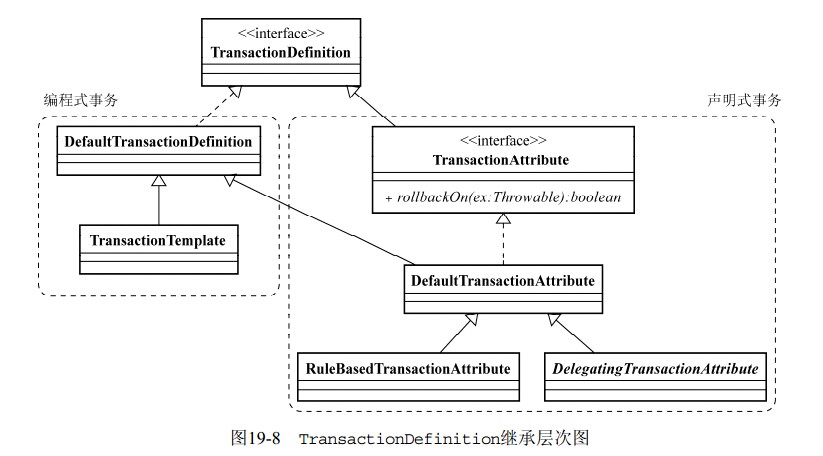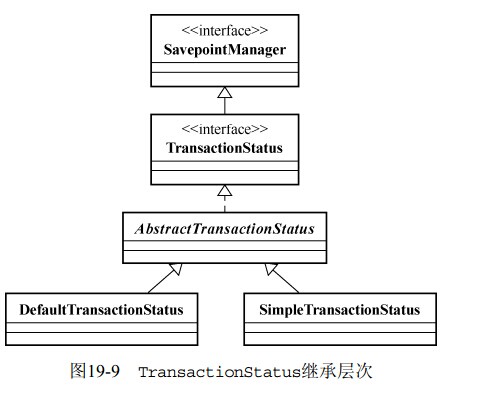概要
spring事务包含3个最主要的接口PlatformTransactionManager,TransactionStatus,TransactionDefinition 。其中PlatformTransactionManager负责管理事务的边界,
TransactionStatus负责描述事务的状态,TransactionDefinition定义事务相关属性,例如隔离级别,传播行为等。
PlatformTransactionManager
PlatformTransactionManager 的整个抽象体系基于Strategy 模式,由PlatformTransactionManager 对事务界定进行统一抽象,而具体的界定策略的实现则交由具体的实现类。
public interface PlatformTransactionManager {
TransactionStatus getTransaction(TransactionDefinition definition)
throws TransactionException;
void commit(TransactionStatus status) throws TransactionException;
void rollback(TransactionStatus status) throws TransactionException;
}
TransactionDefinition
TransactionDefinition定义了事务的相关属性:隔离级别,传播性,超时,只读状态。
Isolation: The degree to which this transaction is isolated from the work of other transactions. For example, can this transaction see uncommitted writes from other transactions?
Propagation: Typically, all code executed within a transaction scope will run in that transaction. However, you have the option of specifying the behavior in the event that a transactional method is executed when a transaction context already exists. For example, code can continue running in the existing transaction (the common case); or the existing transaction can be suspended and a new transaction created. Spring offers all of the transaction propagation options familiar from EJB CMT. To read about the semantics of transaction propagation in Spring, see Section 10.5.7, “Transaction propagation”.
Timeout: How long this transaction runs before timing out and being rolled back automatically by the underlying transaction infrastructure.
Read-only status: A read-only transaction can be used when your code reads but does not modify data. Read-only transactions can be a useful optimization in some cases, such as when you are using Hibernate.
TransactionStatus
org.springframework.transaction.TransactionStatus 接口定义表示整个事务处理过程中的事务状态,更多时候,我们将在编程式事务中使用该接口。
public interface TransactionStatus extends SavepointManager {
boolean isNewTransaction();
boolean hasSavepoint();
void setRollbackOnly();
boolean isRollbackOnly();
void flush();
boolean isCompleted();
}

在事务处理过程中,我们可以使用TransactionStatus 进行如下工作。
- 使用TransactionStatus 提供的相应方法查询事务状态。
- 通过setRollbackOnly() 方法标记当前事务以使其回滚。
- 如果相应的PlatformTransactionManager支持Savepoint,可以通过TransactionStatus 在当前事务中创建内部嵌套事务。